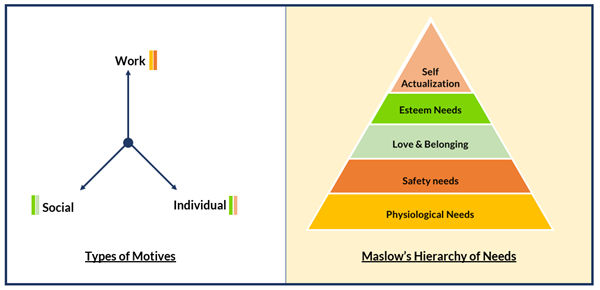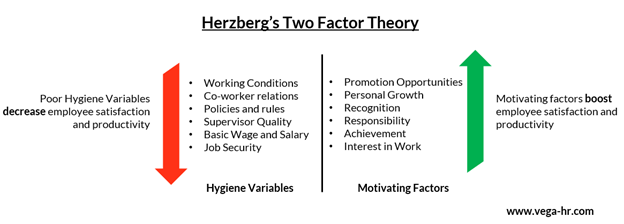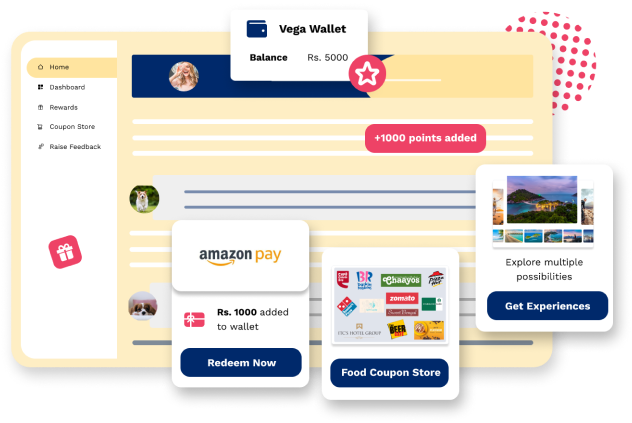Introduction
Motivated Employees give their complete potential. If you’re looking to understand the underlying psychology of motivation and looking to have a better understanding of Employee Retention, then you are in the right place. We will break down the various aspects of motivation and also talk about ways to increase motivation to have better retention rates.
What Is Employee Motivation?
The word “Motive” is in the heading itself. It is important to understand the underlying motivation which is driving your employees to work. For most of the employees, it would be Pay or Compensation but is it only about the Pay? Let’s try to understand. What would be the kinds of motivation that would exist for a person?
Taking a leaf out of Maslow’s Hierarchy of Needs and comparing it to the types of motives, we can find that motives can vary across the entire needs.
As you can see from the picture below, there are mainly three types of motives:
Individual Motives and Organizational Incentive Systems
What we mean by this is that they satisfy their personal needs like Self Esteem and Self Actualization. These people are driven by their personal needs and their need to achieve more and reach that autonomy status. These kinds of people take initiative and responsibility personally. They like a sense of challenge and accomplishment. So, they set their goals and go after them without having external stimuli as their source of motivation.
Understand Social Motives
Clearly, for this set of people, we intend to focus on their interaction with their peers. We’re classifying them into both Self Esteem and Belongingness categories. Some people with this motive are driven by the power initiative and the drive to lead others. They look for leadership roles and challenges where they can exercise authority and take control. While others seek strong relationships with others and look forward to connecting with them and helping them. They organize social activities and collaborate for activities.
Work Environment Motives For Employees
With this motive, we are questioning the basics. Is the work environment providing security and stability or balance and comfort? These kinds of people are loyal employees and are looking for job security and steady employment, and prefer a regular and secure source of income for their everyday needs. Others like to have a work-life balance and look for a source of comfort in addition to their steady employment and having a relaxed bearing.
All work organizations have people with all three kinds of motivation. You might need to identify who falls in which category and work on retention plans as per their motive. We know this is a little difficult exercise to do for the entire organization. But to all the Managers out there reading this, totally in your hands to think about your teammates.

We’ve spoken about what motivates the employees. But what comes next?
How are you able to engage with your employees and motivate them to stay with your organization? We will talk about how to calculate Employee retention and how Retention is preferable to new hires, but one major component in having retention or highly motivated employees is Engagement. Would like to talk about this before we go into retention, such that you would understand its importance better.
How To Increase Employee Engagement and Motivation?
Emotional belongingness has become more relevant now that we are separated together in these uncertain times. And it is up to the organization to have an idea about how they want to engage with their employees in these times. But, we recommend knowing the basic hygienic factors and Motivating factors to understand how to engage with your employees better.
Look at Herzberg’s Two-factor theory, with motivating factors and hygienic factors below:

Hygiene factors are essential, with the reduction in hygienic factors, you lose your employee satisfaction and with the increase in Motivating factors, you gain employee productivity. In reality, you might have a matrix of some of the good factors and some unwanted ones. It comes to how you want to tackle the factors and ultimately create a better environment for your employees. Some of the ways you can have employee engagement are:
- Creating conditions for good performance
- Taking timely feedback
- Open Communication
- Align employees to your company Values
- Rewards & Recognition ( we’ll be discussing this later)
- Looking for Upskilling and Reskilling opportunities
- New Opportunities (Cross-Functional experiences)
- Make sure there’s supportive and effective supervision
Once dissatisfaction is eliminated, you can start focusing on motivating your employees. But to know about the dissatisfaction, there would be a need for a culture of feedback.
Let’s connect Employee motivation to Employee Engagement now. We know the various motives with which Employees wake up to actually work and we also know that there are multiple ways to engage them, but linking these two is where most organizations lack. Rewards & Recognition is one such means to build company culture. Rewards & Recognition, most commonly known as R&R are pivotal in making employees feel at home. It can help in satisfying both the Individual and Social needs of the people to help them feel valued for their contribution and also give them a sense of belonging and accomplishment in the area they are working on. For such people, more responsibility towards their work and cross-functional opportunities can help them understand their own skills giving them an environment of learning and growth.
For people who work for a sense of security or comfort, you can look to upskill their skill set with Microlearning or bite-sized learning forums available nowadays or give cross-learning opportunities to make them more skilled for the betterment of the company as a whole. R&R also has an impact on organizational values, but let’s leave that discussion for another day.
How To Improve Employee Retention and Motivation?
Don’t worry. If you’ve reached here, Congrats! You’ve made it to the last section. But why are we talking about Employee Retention in the end?
Because that’s the goal. You motivate, recognize, reward, and engage with your employees with the hope that they stay with you. Emphasis on “hope”.
But what is Employee Retention and how do you measure it?
Employee retention is the company’s capacity to limit employee turnover i.e. limit the number of employees who quit their work ( either voluntarily or involuntarily) within a given period of time. It is calculated by dividing the number of employees on the last day of the given period by the number of employees on the starting day and multiplying by 100.
Studies by The Society for Human Resource Management (SHRM) reported that on average it costs a company 6 to 9 months of an employee's salary to replace him or her. So the next time you’re wondering about hiring & training a new person instead of putting more effort into the engagement of existing employees, think about the cost that would be incurred to you.
Know About Employee Retention Strategies
Employees leave for various reasons. We’ve discussed some of the reasons above, they might include reasons like a bad relationship with the manager, unchallenging or routine work, salary, or the organizational culture, etc. but some of the methods to ensure retention are:
- Recognizing employees
- Training and development
- Compensation
- Open Communication
- Work-life balance
We can elaborate more on these points, but let’s keep them for another day.
In conclusion
Understanding the relationship between Employee Motivation, Engagement, and Retention can help your organization design the best strategy for increasing employee satisfaction and performance. And in this trifecta, Rewards & Recognition play an important role. So, if you are looking for a one-stop R&R solution for your organization check out Vega HR.
Frequently asked questions
About Vega HR
Vega-HR is a powerful tool in the talent war, offering employee rewards, recognition, and pulse recognition. With an engaging platform, it fosters a world-class work culture, providing P2P recognition, social feedback, on-spot recognition, and monetizable incentive solutions with 3000+ coupons in various categories.
Create a Culture People Want to Stick to
- Send rewards
- Give shoutouts
- Build a community
- Gift experiences
Get a demo
 Written by Sudha 17 October 2022 | 4 min read
Written by Sudha 17 October 2022 | 4 min read






